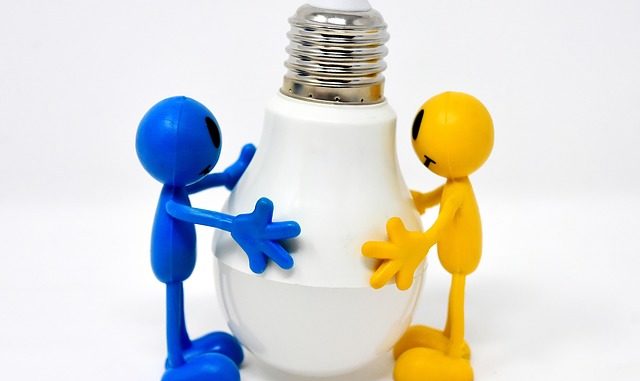
Ever since the first electric lamp (the carbon-arc lamp) was introduced in the 1800s, many novel lighting technologies have emerged. These include fluorescent, mercury-vapor, halogen, and others.
Currently, the lighting marketplace is dominated by fluorescent lighting (at about 42%), high intensity discharge lighting (at 26%), and incandescent lighting (at 22%).
LED (Light Emitting Diodes) lighting has emerged as a potentially disruptive lighting technology, and its growth is accelerating. Because LED lighting has only captured about 1% of the market thus far, it is reasonable to wonder about its future.
(a) How does LED differ from standard lighting?
(b) What advantages does LED provide over standard lighting?
(c) Will growth in LED lighting continue?
How does LED lighting differ from standard lighting?
Unlike ordinary incandescent bulbs, LEDs are tiny light bulbs that fit within an electrical circuit. What makes LEDs unique is that they do not have filaments that will burn out, so they do not get as hot as filament bulbs.
Because LEDs are illuminated solely by the movement of electrons in a semiconductor material, they last as long as a standard transistor. The lifespan of an LED exceeds the life of an incandescent bulb by thousands of hours. For this reason, LEDs are used for digital clocks, instrument panels, TVs, and in many digital devices.
What advantages does LED lighting provide over standard lighting?
It is surprising that LEDs have not captured a larger portion of the lighting marketplace.
In order for growth in LED products to continue, the technology should provide noticeable advantages over traditional lighting. The following list highlights the top advantages of LED lighting:
-
- It is energy efficient because it is digital lighting. It is clean energy (it is Eco-friendly) because it neither emits toxic by-products nor radiation (such as UV or infrared). Furthermore, LED lights are recyclable.
-
- It has long life and has better energy efficiency of about 80% compared with traditional lighting with energy efficiency of less than 30%. This means that the customer reaps significant savings in energy costs by switching to LED lighting.
-
- It can withstand shock, vibration, external impact forces, and temperature variations much better than traditional lighting. Consequently, LED lights are ideal for outdoor lighting, traffic signals, and for use in manufacturing or industrial environments.
-
- It provides illumination almost instantly, whereas traditional lighting usually takes some time to reach full brightness.
Will growth in LED lighting continue?
Because of the benefits that LED lighting provides, it is reasonable to expect its growth to continue. Actually, the federal and many state governments provide tax credits to manufacturers and to individuals who switch to LED lighting.
It is not difficult to find LED products in many hardware stores. If you want guidance in selecting LED products, professional help is available at US Electrical Services, at the web address https://usesi.com/.

